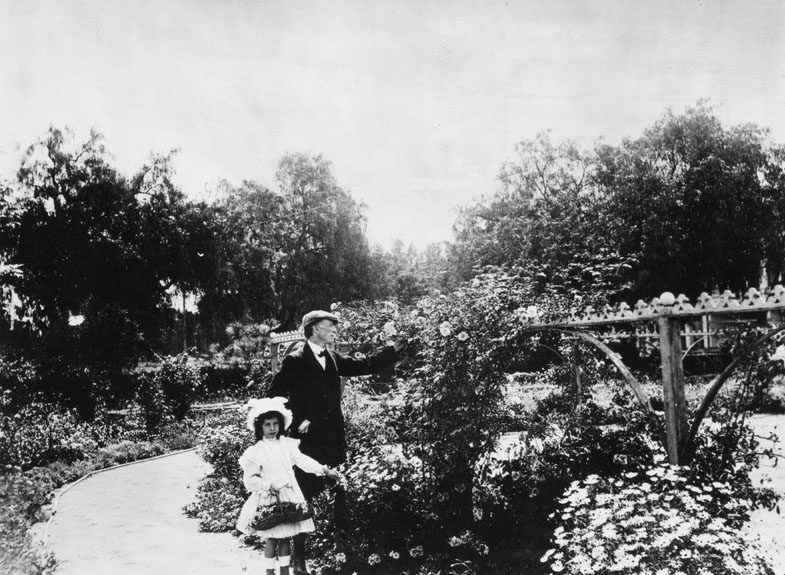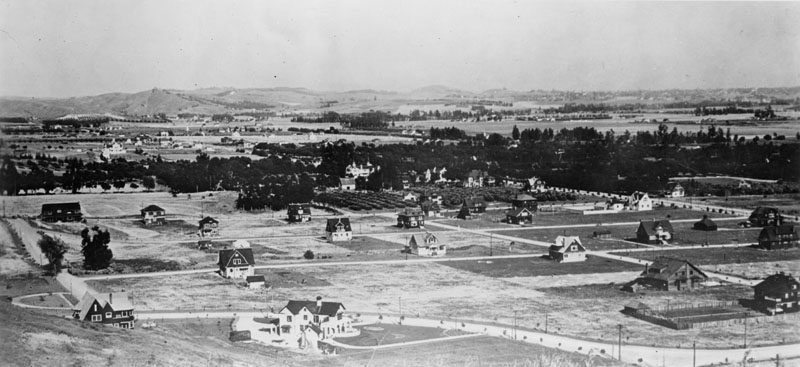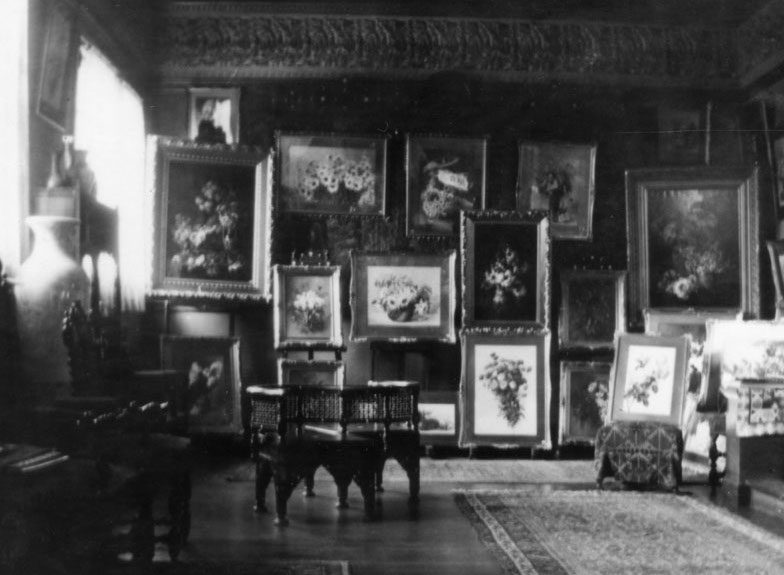Los Angeles is a city with a rich history. Despite modern architecture, historical buildings that characterize the spirit of the city and reveal its pride are also attractive. One such building is the mansion of Paul de Longpré. Los Angeles Future tells about the famous French artist and his mansion.
Who was Paul de Longpré?
In the spring of 1899, the French artist Paul de Longpré moved to Los Angeles. He became famous thanks to his still lifes with floats, as well as bouquets of lush flowers.
The future artist was born in 1855, in the village of Villeurbanne. The family was affluent for a time, as Paul de Longpré’s mother was an experienced Creole heiress. However, his father, a textile designer, quickly spent the fortune of a large family, which together with Paul had eight children. They all moved to Paris, where from a young age, Paul de Longpré not only studied but also worked on silk machines to help the family. The greatest solace for him in those days was painting a field of flowers outside Paris, but he had to miss classes for this. These drawings were bought by his peers with pocket money.
In adolescence, the boy joined his older brothers. All of them painted silk fans for young Parisian women. In 1874, he married Josephine, a talented seamstress. Three daughters were born in their family: Alice, Blance and Pauline.
Paul de Longpré remembered the time when the young family had nothing but love and happiness. They didn’t have a great villa, but that didn’t stop the family from sincerely enjoying and appreciating what they had.

Moving to America
In the following decades, the artist focused on flower paintings. Some time passed and his masterpieces were exhibited in exclusive Parisian salons. This brought the artist not only fame and success but also wealth. A reckless investment in Panama Canal Securities destroyed the financial stability of the family.
After that, the artist was invited to America. It was in 1890. The local commercial area was growing. He understood that well. At first, the artist settled in New York, where he slowly, but successfully, began to arrange his career. He found a job as an illustrator of seed catalogs, drawing for advertising campaigns. One of his notable works, which brought an increase in fortune, was an exquisite painting of yellow roses for souvenirs. It was given to tourists at the 1893 World’s Columbian Exposition in Chicago. This was an order for the J. Ottman Lithographic Company.
After that, the works of Paul de Longpré began to be exhibited in the best galleries of New York, as well as covered in The New York Times. At the exhibitions, there were always many visitors who wanted to feel the redolent aromas of spring thanks to art.

Paul de Longpré in Los Angeles
The artist loved aesthetics, so he surrounded himself with it everywhere. He lived at 877 West End Avenue and in a country cottage in New Jersey. There are several versions of moving to LA in 1897. Probably, the flowerless winter in New York forced him to change the city.
Here are a few reasons why Paul de Longpré decided to move.
- He was tired of traditional European styles and too high expectations.
- New York was characterized by a fiercely competitive environment, constant activity and a desire for success. Probably, the artist was looking for a place for a more peaceful life.
- California, with its bright sun and rich variety of flowers, became a new source of inspiration for his work.
- The artist wanted to live here because he had a deep affection for this region.

History of the mansion
Paul de Longpré with his family settled in a large mansion on the corner of West Adams Boulevard and Figueroa Street. Instead of rent, he gave his paintings to the owner.
He was often seen by the townspeople, recalling how he enjoyed riding his bicycle through the quiet suburbs. A palette, paints and an easel were strapped to his back. This period of life is described in the book The Life and Art of Paul de Longpré by Nancy C. Hall.
Constant travel and exploration of the surrounding area led the artist to flourishing Hollywood. In 1901, Daeida Wilcox Beveridge, the founder of Hollywood’s upper class, personally got acquainted with the still lifes of the famous French artist Paul de Longpré. She felt a kindred spirit. He told her about his dream of having a beautiful estate, a studio where visitors could come and enjoy the house and gardens and also buy paintings.
Daeida introduced an elegant French immigrant to her acquaintances, with whom they struck up a friendship. The artist purchased a large plot of land at the corner of Prospect Avenue (modern-day Hollywood Boulevard) and Caguas Avenue, paying $10 per acre. He immediately started designing, wanting to realize his dream of creating a paradise corner.
Mansion of the Longpré family
Paul de Longpré’s three-story mansion was designed by Canadian architect Louise Bourgeois and executed in the Mission Renaissance style. On three acres of land, there were exquisitely planned gardens that were marked on the Hollywood map.
In 1901, the mansion was completed. The family moved there and became the most famous residents of Hollywood.
Thousands of tourists and townspeople traveled a difficult and long way to personally stop in front of the estate, walk through the gardens, look at the art gallery and the artist’s works. Shops at Paul de Longpré’s house were also available. It was a period of great prosperity. Reporters who were attracted by the atmosphere of the place could also be seen near the mansion. Paul de Longpré was always ready to talk to them.
Interestingly, the artist’s house was added as a stop to General Sherman’s famous long-distance railroad. We are talking about the ‘balloon route’. The mansion of Paul de Longpré quickly became the most appreciated attraction of the route. In its heyday, the estate was visited by about 8,000 people every month.
Here are some more interesting facts about the house:
- wide windows, columns and high towers on the second floor added to the mansion’s formidableness
- American and French flags flew on the towers
- hundreds of lights hung from the open beams of the mansion
- at the front entrance, visitors were attracted by graceful arches with arabesques, which were designed exclusively for the artist. When finished, he ordered the forms destroyed to avoid copying
- everything from the ceiling to the floor was covered with fascinating floral paintings. Thanks to this interior, visitors felt as if they were walking in a garden.

Expansion of the territory
The artist managed to increase the territory. He received more land from Daeida Wilcox Beveridge for the price of three paintings. He and his wife became the most popular hosts, part of the community of art aristocrats, as well as the Hollywood elite of Southern California.
The decline of the mansion
The period of rise and prosperity could not last forever. The openness and trustworthiness of the owners of the estate led to thefts. Many valuable things were stolen. In 1911, Paul de Longpré died and his estate began to slowly decline. Josephine and her daughters closed the house, sold it and returned to France.
In 1925, the building was demolished. Thus, a place became available for metropolitan Hollywood, familiar to the modern generation. Photographs have survived to this day and are available in the photograph collections of the Los Angeles Public Library and the Security Pacific National Bank.


